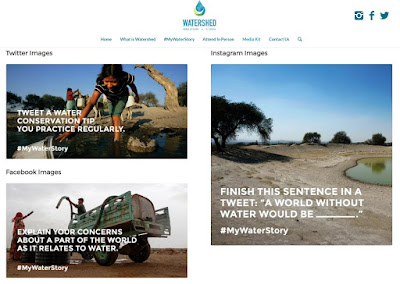 | |
|
Assurity has been practicing sustainability in some form or another for almost 30 years. The building of our LEED Gold certified Assurity Center corporate office has given us many more opportunities to expand upon that culture. Additionally, becoming a certified B corporation in 2015 was another way to show our commitment to "doing good."
We are firm in our belief that it is our responsibility to protect the environment and leave a small footprint. One of the areas in which we have done that is groundwater conservation and protection.
Our efforts towards that end have earned us a Groundwater Guardian Green Site designation that we are proud to hold. There are many features of our corporate campus that qualified us for that honor:
Stormwater collection
During the building of the Assurity Center, an abandoned public storm water pipe was discovered running along the east and northern edges of the property. This pipe was capped and is now an 180,000 gallon cistern that we use to reclaim and reuse storm water to irrigate our indigenous sustainable landscaping.
Our campus includes a rain garden, bioswales and pervious paving which reduce runoff and allow absorption of rainwater into the subsoil.
The reuse of large quantities of storm water runoff reduces heat island effects as well as impacts to downstream receiving waters.
 |
| Stormwater management for the Assurity Center. |
In addition to the reclaimed cistern, water for the campus landscape is pulled from wells in the area instead of using public water for irrigation. Additionally, plants were selected that are native or specifically adaptive to Lincoln’s climatic conditions, reducing reliance on additional water use while creating habitat within the city.
Green (living) roofs
We have 3 green roofs totaling 8,000 square feet. These roofs benefit stormwater quality and reduce the quantity of runoff.
Low-flow, water-conserving plumbing
We receive up to a 33% water use savings over the typical office building by using dual-flush toilets and low-flow faucets and showers.
Energy recovery ventilators
In addition to reducing energy costs, these units also employ dehumidification as a part of the process, conserving water as well.
Education
Building a sustainable culture began with Assurity’s top company leaders and has continued to grow with educational lunch ‘n learns, displays and an internal ‘Greenspace’ website that communicates related community events, activities and volunteer opportunities. Our education efforts are led by our Sustainability Task Force.
The desire to do good for the environment will continue to be at the forefront of Assurity's business. It’s the right thing to do.
____________________
Tammy Rogers is the Chair of the Sustainability Task Force and a Senior Business Analyst at Assurity Life Insurance Company in Lincoln, Nebraska. Reach her at trogers@assurity.com.
The views expressed in this blog are those of the authors and do not necessarily represent the view of The Groundwater Foundation, its board of directors, or individual members.


















